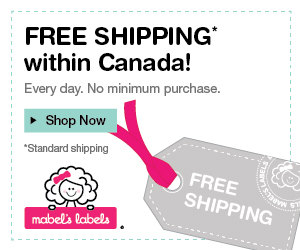How to Organize Your Social Media Marketing
This page may contain links to Amazon.com or other sites from which I may receive commission on purchases you make after clicking on such links. Read my full Disclosure Policy

I’ve spoken to a number of organizers who don’t see any value in social media. Although maintaining an online presence can be time-consuming, it doesn’t have to be. My guest today is Andrea J. Stenberg, author of the blog The Baby Boomer Entrepreneur, which I’ve been reading for several years.

Getting organized with your social media marketing can be a challenge, particularly if you use more than one site. However with a little planning along with a dash of discipline, you can get great results without having it take over your life.
Set goals
It is rare, but not impossible, that you’ll send a Tweet and someone will call with their credit card in hand, ready to buy. There’s usually some steps from first contact to the sale. Some refer to it as the marketing funnel. Regardless, you know that people follow a path from when they first learn you exist to that first purchase.
For example, in my business I often see people follow me on Twitter, reTweet me a couple of times, Like my Facebook page then sign up for my email newsletter. Once they’re on my newsletter I can start marketing to them directly. Figure out what path your customers will take and set some goals based on this path.
Decide on your content
Make a plan, or better yet an editorial calendar, about what you’ll post. As a business professional providing a service, you’ll want to establish yourself as an expert by providing useful and educational content. But you’ll also want to give people a chance to get to know you as a person – after all they’re hiring you, not the business. So you’ll need to include some more personal type posts – ones that show your personality.
Finally, you can’t forget to promote yourself. Just don’t overdo it. My suggestion is approximately 60 percent of your posts should be educational, 30 percent personal and 10 percent self promotional.
Be social
It’s called social media for a reason. If all you’re doing is broadcasting, you’re missing the most powerful feature of social media – having conversations with individuals. Reply to other people’s Tweets on Twitter. Comment on other people’s posts in Facebook. Participate in discussions in groups on LinkedIn. So few people are truly social online, you’ll stand out from the crowd. Even more important, you’ll learn what your prospects really want and need.
Schedule your time
Learning the best days and times to post to your audience will take some time. On Twitter you can easily post five to ten times a day, over and above conversations you have with other Twitter users. Spread them throughout the day if you can. Don’t forget people in different time zones.
On your Facebook page you may want to have one to five posts per day. Use the Facebook Insights to track what type of posts and what times of day get the most views, comments and likes. Don’t forget to try posting on weekends. Saturday morning is a common time for working people to access Facebook.
On LinkedIn, you don’t need to update your status as frequently as on Facebook and Twitter; one to three times per week is usually enough. Spend most of your time in groups or connecting with your contacts.
Automate & Schedule
There are a multitude of tools for scheduling and postdating your updates. In Facebook you can schedule posts right on your Page. You can use third party software like TweetDeck, Hootsuite or Buffer to post to Facebook, LinkedIn & Twitter simultaneously. These let you schedule your posts throughout the day or even the week.
A word of caution: relying too much on automation and post-dating can harm your social media efforts. Facebook aggregates posts from third party applications. This means if one of your followers likes 9 other pages and you all use Buffer to make your posts, this follower may only see one of the ten posts from these pages – and it might not be yours.
Also, when many people see posts made from other tools, they dismiss what you say because they feel you’re not present on the site.
Finally, the temptation with scheduling posts is to forget to read what other people are posting. Make sure you schedule time for commenting on what others say.
So go out, make a plan and get results.
© iStockphoto.com / pressureUA











Very informative post. I learned a lot from it. I use hootsuite for many of my clients posts and one thing I was wondering is, when you say “Also, when many people see posts made from other tools, they dismiss what you say because they feel you’re not present on the site.” How do people know that you’re not present.
I believe it is because the post will say, “posted via Hootsuite”, therefore your consumers don’t think that you are actually making an effort, as opposed to taking the time to type out a post on the spot and interact with them on a daily basis.